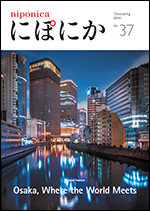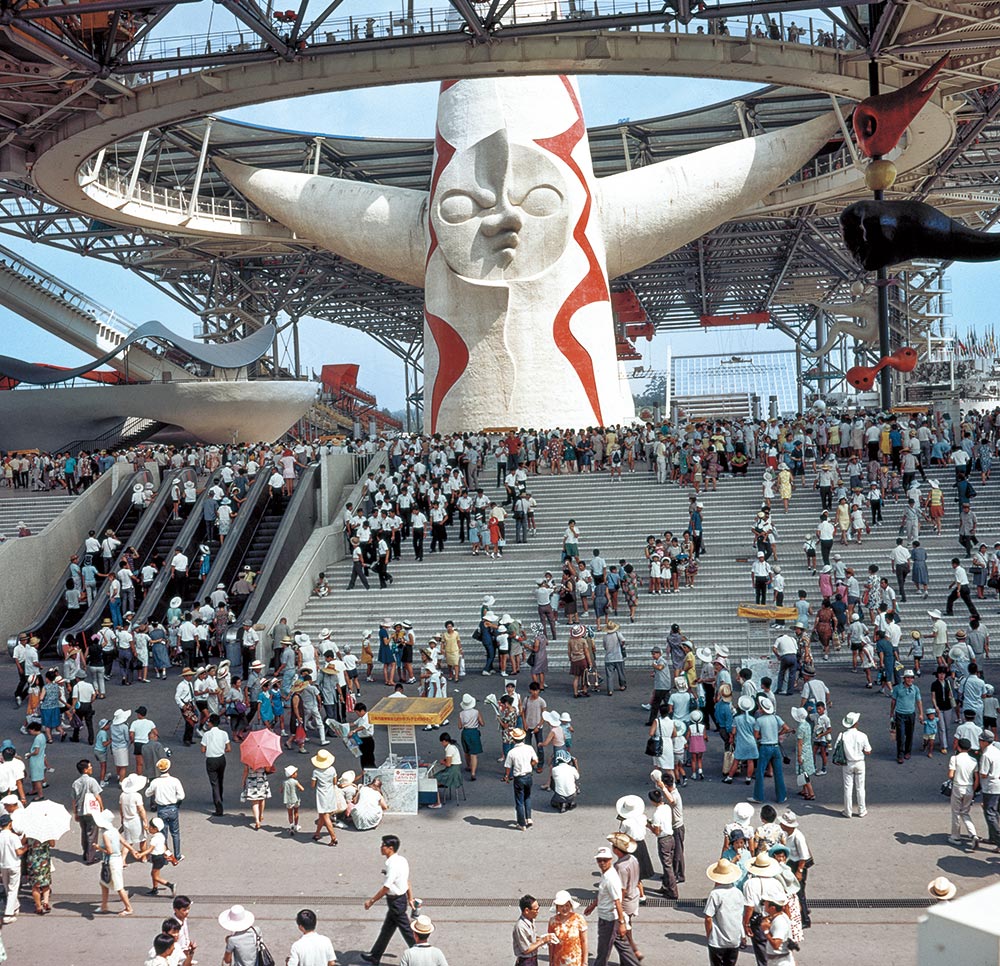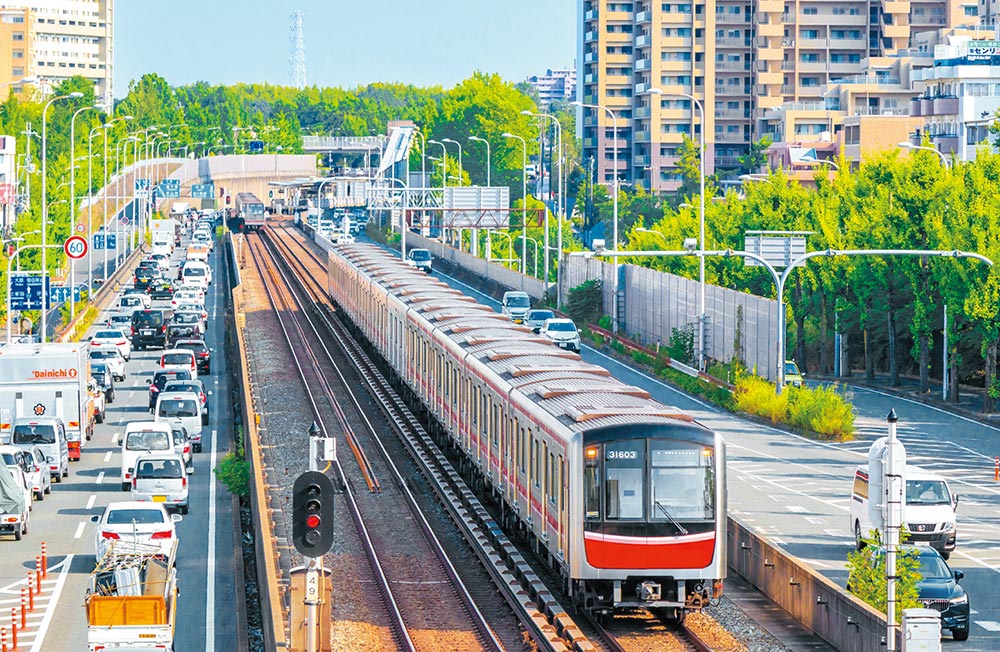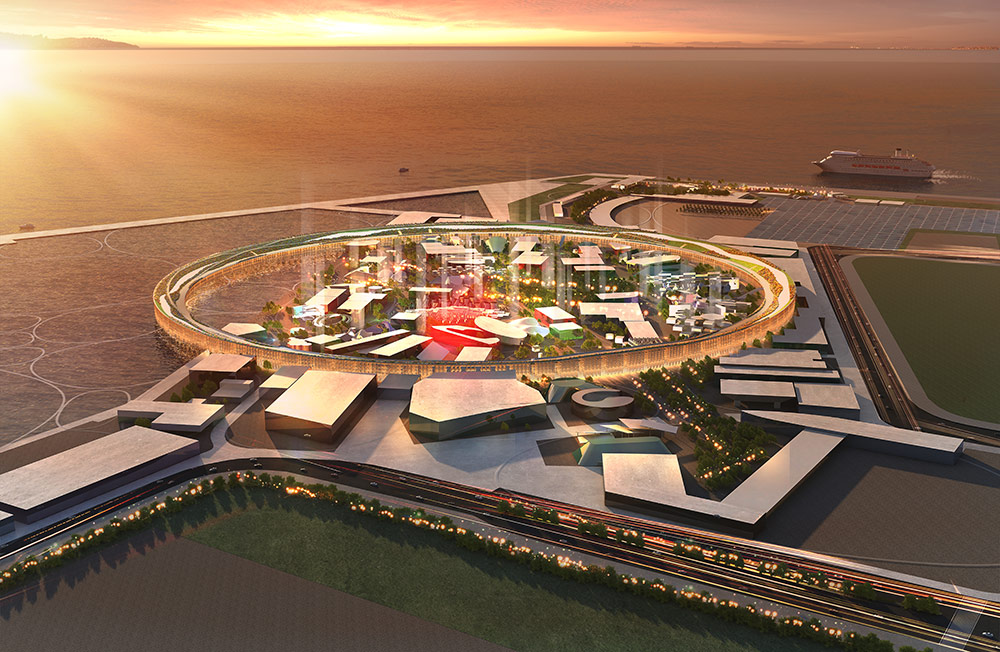
2025 NO.37
MenuOsaka, Where the World Meets

A City Evolving through Expos
Osaka has been host since the 19th century to a variety of large-scale exhibitions, each serving to advance the city’s industry and culture.

"Detailed view of the Fifth National Industrial Exhibition" (Collection of Amagasaki City Museum of History)
Thriving Osaka District Grows on Expo Footprint
The history of Shinsekai, a bustling neighborhood in southern Osaka that is now filled with crowds of people every day, began in 1903 with the Fifth National Industrial Exhibition. Seeking to promote industry, the exposition showcased the latest technologies from Japan and abroad with an observation tower equipped with an elevator, an unusual sight at the time, and evening illumination displays. These attracted so much attention that over 4.5 million visitors are said to have attended. When the exhibition closed, the site was used to build today’s Tennoji Park, as well as Luna Park, an amusement park and home to the well-known Osaka landmark, Tsutenkaku Tower. Although Luna Park closed after just ten years, the area has since developed into an entertainment district lined with diverse venues. The same lively atmosphere that filled the area during that initial expo is alive today.
Birth of a City Symbol and Expansion of the Transportation Network
In 1925, to commemorate the expansion of its city limits, Osaka hosted the Great Osaka Commemorative Expo, and in 1948, it held the Great Reconstruction Exhibition to celebrate its recovery from the World War II. It was, however, hosting Japan’s first international expo, Japan World Exposition Osaka 1970 Expo ’70, that had a particularly strong impact on Osaka.
Taking up the theme of “Progress and Harmony for Mankind," this international exhibition was held in Senri Hills, about 13 kilometers north of the Osaka city center. Over 64 million people visited the expo’s various pavilions. When Japan World Exposition Osaka 1970 closed, the vast site was redeveloped as the Expo ’70 Commemorative Park. Kept in place was the Tower of the Sun, built as one of the expo's themed pavilions. In addition, the National Museum of Ethnology, which exhibits folklore and cultural anthropology from Japan and across the world, was built. More recently, a large complex of interactive multiplexes and a shopping mall has also been built here, and the area is gaining popularity once again.
As the city hosted these large expos, the transportation network expanded. The newly established Kita-Osaka Kyuko Railway is one such example. Day after day, the railway carried Expo visitors from the center of Osaka to the venue’s location in Senri Hills. Since the exhibition, the train has continued to be an integral part of the daily lives of people living in the large residential area of Senri New Town.
The 183-day Japan World Exposition Osaka 1970 was the first international expo held in Asia, with 77 countries participating. The commemorative Expo '70 Pavilion in Expo Commemoration Park illustrates the enthusiasm of the time. Public entry to the Tower of the Sun, designed by Taro Okamoto, is available by appointment. (Photo: Osaka Prefectural Government)
Building a City for the Future—EXPO 2025 OSAKA, KANSAI, JAPAN
Now, with the upcoming EXPO 2025 OSAKA, KANSAI, JAPAN, wide roads are being built in the venue’s vicinity, subway lines are being extended, new subway stations are being added, and major stations are being renovated. Expo 2025 will be held on Yumeshima, an artificial island in Osaka Bay. The venue is designed to highlight the waterfront, evocative of Osaka as Japan’s City of Water.
As a host of large-scale expositions, Osaka continues to evolve. The upcoming expo will transform the city into an even more attractive place for residents and visitors alike.








